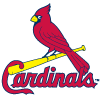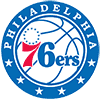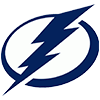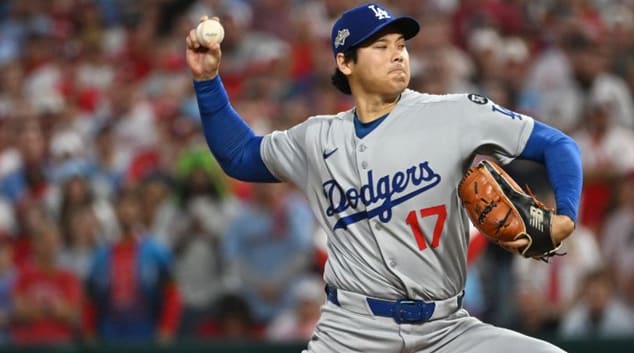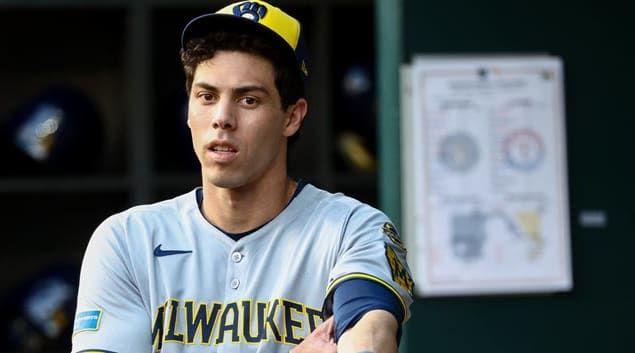Every year millions of dollars are wasted by major league teams that pay elite players to spend time in the athletic training room recovering from injury. The cost may not be as great for fantasy owners, but nothing is more maddening than seeing a top draft pick languish away on the disabled list. However, you can take steps to protect yourself from wasted picks and waiver-wire additions by reducing the risk associated with your team.
The quickest way to prepare for a draft and manage a team during the season is to familiarize yourself with basic medical terminology. You do not have to necessarily understand specific terminology or diagnoses to gain an advantage on your competition. However, knowing the difference between a sprain and strain can help. A sprain is an injury that occurs to ligaments while a strain is a muscular injury. The primary difference between the two is the length of recovery. Generally, muscles have a better chance of healing quickly since they are vascularized, meaning they receive a healthy amount of blood.
Both sprains and strains are graded on severity of the damage done. A Grade I sprain or strain means the damage is minimal with tearing occurring on the microfiber level. A Grade II injury usually means individual muscle or ligament fibers have torn and the injury can be classified as a partial tear. Grade III or IV injuries are serious ailments and usually are accompanied by a complete loss of function as the ligament or
Every year millions of dollars are wasted by major league teams that pay elite players to spend time in the athletic training room recovering from injury. The cost may not be as great for fantasy owners, but nothing is more maddening than seeing a top draft pick languish away on the disabled list. However, you can take steps to protect yourself from wasted picks and waiver-wire additions by reducing the risk associated with your team.
The quickest way to prepare for a draft and manage a team during the season is to familiarize yourself with basic medical terminology. You do not have to necessarily understand specific terminology or diagnoses to gain an advantage on your competition. However, knowing the difference between a sprain and strain can help. A sprain is an injury that occurs to ligaments while a strain is a muscular injury. The primary difference between the two is the length of recovery. Generally, muscles have a better chance of healing quickly since they are vascularized, meaning they receive a healthy amount of blood.
Both sprains and strains are graded on severity of the damage done. A Grade I sprain or strain means the damage is minimal with tearing occurring on the microfiber level. A Grade II injury usually means individual muscle or ligament fibers have torn and the injury can be classified as a partial tear. Grade III or IV injuries are serious ailments and usually are accompanied by a complete loss of function as the ligament or muscle completely tears. These injuries come with a longer window of recovery and, depending on the location, surgical intervention is often required.
Based on this information, try to avoid getting wrapped up in vague descriptions of sprains and strains and look for specific grades. Some reports may say the ligament or muscle is torn when really it is a minor injury. Unfortunately, important information gets lost in translation and fantasy owners can make rash decisions.
With the difference between the two well understood, now you can focus on the location of the injury. Sprains and strains can occur in any joint, but affect individuals differently. Upper extremity injuries are common in baseball due to the constant overhead motion demanded by the sport. The shoulder is comprised of various muscles that help stabilize and move the shoulder in multiple planes. The muscles are then fortified by a capsule of ligaments and cartilage. Injuries to the shoulder can be the result of an acute, isolated incident or chronic wear-and-tear. The most common injury, particularly for pitchers, occurs to the rotator cuff muscles and their associated tendons. To complicate the matter, the tendons of these muscles are compacted into a tight space and if inflamed can become pinched or impinged, leaving them open to tears.
Another common shoulder injury fantasy owners should familiarize themselves with is the labral tear. The labrum is a ring of cartilage that deepens the articulation of the shoulder while providing stability. Pitchers generally develop labrum tears over a period of time as the repetitive motion of throwing slowly weakens the area. For position players, a tear often occurs following an awkward fall while attempting a diving catch or after crashing into the outfield wall. Treatment for this injury is dependent on the extent and pattern of the tear and the amount of associated instability. If the tear is small, the muscles surrounding the joint can be strengthened and surgery is avoided. However, if the tear is significant, players often require surgery and miss an extended period of time.
Moving down the arm, we come to the elbow. The elbow is a simple hinge joint but an injury here can be particularly troublesome. The best known elbow injury is an ulnar collateral ligament (UCL) sprain. The UCL provides support to the medial or inside of the elbow, but is subjected to high amounts of force during throwing. If the UCL tears, the athlete generally requires Tommy John surgery to replace the injured ligament. Numerous pitchers have been forced to undergo Tommy John but fortunately it is no longer considered a career-ending injury. Pitchers generally require a complete year before they can return while position players can return in half that time.
The elbow can also be strained, especially the flexor muscles of the forearm. Like the UCL, the flexor bundle is exposed to high degrees of stress leaving it vulnerable to strains. Because the flexor bundle originates at the same point as the UCL, injuries to the area must be appropriately managed.
With a solid understanding of upper extremity injuries, let's move below the belt to the lower extremities. The most common injuries in this location are muscular strains, particularly in the quadriceps, hamstrings, and groin. Each muscle group is responsible for performing a motion at the hip and/or knee and all work in unison to accelerate and decelerate the leg during activity. The multitude of motions to bat, pitch, catch, and throw leave these muscles vulnerable to strains. Based on the manner of healing, these kinds of injuries are also susceptible to aggravation and re-injury. Even the slightest of strains can lead to a cascade injury and must be properly healed before a player returns to the diamond. Players, particularly veterans, with a lengthy history of lower leg strains have an increased inherent injury risk.
Sprained ligaments to the joints of the lower extremities often occur traumatically. Ankle and knee sprains are common place in baseball, particularly while running and sliding. As previously mentioned, the rate of recovery from these injuries is dependent on the severity of the damage. A minor sprain may warrant a day or two off while a significant sprain can require surgery.
Like the labrum in the shoulder, the knee has a specially designed cartilage to help provide stability. Between the bones of the upper and lower leg sit the menisci, two fibrocartilage disks that serve as a shock absorber for the knee and provide stability. Much like the labrum, they can be injured, especially following a violent twist. Once an injury occurs, arthroscopic surgery is needed to repair the injury site. More often than not a tear is not actually repaired but instead removed or "cleaned up" in a procedure known as a partial menisectomy. In the short term, the athlete is able to make a quick recovery but their long-term health could be placed at risk. Since the cartilage is removed, further problems, such as arthritis, are more likely to develop down the road.
With a basic understanding of injuries, let's focus on specific players looking to bounce back in 2013.
The Nationals handling of Stephen Strasburg following his 2010 Tommy John surgery dominated the headlines last season and brought to focus the management of players returning from the reconstructive surgery. Multiple players, including pitchers and positional players, needed Tommy John and are slated to return for the upcoming season. Relievers Ryan Madson, Brian Wilson, and Joakim Soria missed all or the majority of the 2012 season, but each should be ready to return to the bullpen in 2013. Madson never pitched for the Reds, but inked a one-year deal with Anaheim and may battle Ernesto Frieri for the closer position while the enigmatic Wilson also hopes to emerge as a dominant ninth-inning option after undergoing surgery in April. Soria also underwent surgery in April (his second UCL repair) and should be ready to pitch by spring training. However, just because they are able to pitch does not guarantee they will be effective. Texas closer Joe Nathan struggled his first season following the operation in 2011, but recorded 37 saves last season for the Rangers. Soria will serve as Nathan's new setup man after signing a two-year deal with the team. Wilson and Madson should still have value as closers, but scale back your initial expectations.
Two Texas pitchers needed elbow surgery last season as veteran Colby Lewis and former closer-turned-starter Neftali Feliz went under the knife. Lewis underwent surgery for a torn flexor bundle while Feliz required Tommy John. Both injuries occurred during the season and late surgeries will likely keep them out through the All-Star break. Lewis has a chance of returning sooner, but his history of injuries and tendency to surrender the long ball make him a low-end fantasy option. Feliz will return to the bullpen once healthy, and barring a trade or injury, should have minimal fantasy value as well.
Dodgers pitcher Chad Billingsley did not need Tommy John on his partially torn UCL and is hoping to go through his normal spring routine. He has faced live batters and reportedly had control of his pitches. Given the statistical similarities in his last five seasons, fantasy owners should anticipate more of the same from Billingsley with an increased propensity to injury.
Pitchers were not the only players to suffer UCL injuries as both Rafael Furcal and Carl Crawford missed time with the ailment. Furcal suffered a Grade II sprain in his right elbow, but avoided surgery. Crawford was not able to avoid surgery, but both players should be back by Opening Day. Unfortunately, both players have a laundry list of injuries and are risky plays on draft day.
While the technique used in Tommy John has improved, so too have the procedures for labrum injuries. Minor fraying of the labrum can be arthroscopically cleaned up in a debridement procedure while significant tears must be surgically put back together. Several pitchers including Jaime Garcia and Sergio Santos required shoulder debridements and should be ready for Opening Day. However, labral repairs generally require a four-month hiatus from throwing and batting, stretching the entire rehab process out to about six months. Dodgers outfielder Matt Kemp and Braves catcher Brian McCann each required a labrum repair in October to fix damage sustained during the 2012 season. Kemp can look to teammate Adrian Gonzalez for advice considering the first baseman underwent a similar procedure in October of 2010 and was able to play 11 games the following spring. The surgery means Kemp is no longer a guaranteed No. 1 overall pick, but he is still worth a first-round consideration. The road may be tougher for McCann given the demands of his position, so do not be shocked if he starts the year on the DL.
Labral tears are tougher for pitchers than position players and the odds of returning to a high level are not exactly comforting. Several notable exceptions exist, including Curt Schilling and Chris Carpenter, but a torn labrum has claimed multiple careers as well. It is because of guys like Rich Hill and Brandon Webb that I am avoiding Yankees pitcher Michael Pineda. Pineda has yet to pitch for New York since coming over from Seattle after surgery was needed to repair a tear in the anterior portion of his labrum. The Yankees are not expecting him to be available for the start of the season and I am not investing a pick in a risk that could sit through the All-Star break.
I am also avoiding John Danks who underwent surgery in August to repair a capsule tear and remove debris around his rotator cuff and biceps. Danks avoided labrum damage but I am not optimistic he will be able to quickly put this injury behind him. Capsule tears can be tricky and the recent prolonged recoveries of Johan Santana and Chris Young are enough for me to move on from Danks.
While Santana showed signs of life last season, he quickly faded following his no-hitter. He battled shoulder fatigue as the season wore on before a back injury ultimately ended his season. He is another year older with extra mileage added to his shoulder, making him a precarious addition to most fantasy squads.
It wasn't just shoulder and elbow issues that sent pitchers to the disabled list. Several pitchers including Mariano Rivera and Brandon McCarthy spent time recovering from serious injuries that occurred in shocking fashion. Rivera suffered a torn anterior cruciate ligament (ACL) in his right knee while shagging balls in the outfield. Surgery to repair the tear was performed in June and the all-time leader in career saves could realistically be ready for the start of the season. His age, 43, and the knee injury should allow patient fantasy owners to secure a top-notch closer at a discounted rate.
McCarthy's injuries were a bit more serious. The pitcher suffered a skull fracture and an epidural hemorrhage after taking a line drive off the head. He needed brain surgery and missed the remainder of the season recovering. Though the injuries were severe, McCarthy will be ready to go by spring training. I am still leery of McCarthy but not because of the head injuries. I am more concerned by his chronic shoulder problems. He has missed time in multiple seasons dealing with a stress reaction in his throwing shoulder and has battled elbow problems as well. There is no denying McCarthy has talent but his durability remains a big question mark.
Position players also suffered several acute injuries, none more documented than Derek Jeter's fractured left ankle. The Yankees' captain suffered the injury in Game 1 of the ALCS and missed the remainder of the postseason after undergoing surgery to repair the break. The estimated timeline of four-to-five months of rehab would allow Jeter to be in the starting lineup for Opening Day. However we have seen multiple instances in recent years to know this is not a lock. Players like Kendrys Morales and Scott Sizemore have all been slow to recover from ankle surgery and Jeter could need some extra time to completely heal. Keep a close eye to see if he suffers any setbacks before using a high pick on the 13-time All-Star.
Jeter's teammate Alex Rodriguez is also recovering from offseason surgery after the former MVP needed hip surgery to repair a torn hip labrum and treat an impingement and cyst within the left hip joint. The same surgeon that completed a similar procedure on his right hip in 2009 performed the surgery and A-Rod is expected to miss four-to-six months. The most recent surgery was considered more significant and I doubt we see Rodriguez before the All-Star break.
Several other teams in the American League East have injury questions of their own entering the year. Boston's David Ortiz and Toronto's Jose Bautista are both hoping for a healthy 2013 after injuries prematurely ended their seasons. Ortiz missed 70 of Boston's last 71 games of the season after suffering an Achilles strain. He underwent several treatments including a plasma-rich platelet injection and shockwave therapy to help with the recovery. While his size could make recovery a bit harder, the fact that he only is utilized as a designated hitter will save the area some daily wear-and-tear. Draft Big Papi as you normally would, but expect to see a few more days off this year.
In Toronto, Bautista is recovering from September surgery to repair a torn tendon sheath in his wrist. A tendon sheath is a membrane that surrounds a tendon allowing for smooth movement. Bautista has spent the last few months of rehab regaining any lost range of motion and strength. Sam Fuld underwent a similar procedure and was able to return to the lineup two months later, suggesting Bautista should be healthy by the start of spring training. However, Fuld isn't the power hitter Bautista is and fluid wrist motion is critical to a smooth power stroke. Bautista is hoping to participate in the World Baseball Classic which should serve as a good gauge for the status of his health. If he is able to hit for power, it will be a good indicator Bautista is worth an early-round pick.
Veteran Victor Martinez will likely sit out the World Baseball Classic as he prepares for his return from a one-season hiatus. Martinez suffered a torn ACL in his left knee last season. He also underwent microfracture surgery to help with cartilage damage and did not play a single inning in the 2012 season. However, he is hopeful the complete year off will allow him to be a member of the everyday lineup for Detroit's 2012 campaign. His days behind the plate are likely over and he should see a majority of time as the designated hitter. A DH role should help preserve the knee and Martinez could be an early frontrunner for Comeback Player of the Year.
Disc issues in the spine limited Pittsburgh's Neil Walker and Baltimore's Nolan Reimold last season but both should be ready to return after getting back to their normal offseason routines. Walker's herniated disc was located in his lower back and did not require surgery. Aggressive rehab and treatment allowed Walker to fully recover and he should be an active participant in spring training. Reimold was not as lucky as he needed surgery to repair the bulging disc in the cervical region of his spine. He underwent a surgery in June in which a portion of his spine was fused and part of the effected disc was removed. Fortunately, Reimold is expected to be full recovered in time for the spring but downgrade him a bit as his inherent risk elevates accordingly.
The Rockies' Troy Tulowitzki remains an elite fantasy option when healthy, but avoiding injury has been difficult for the Gold Glove winner. Tulo has had some unlucky hand and wrist injuries but his lower extremity injuries are more cause for concern. He missed a large portion of the 2008 season with a torn right quadriceps tendon and missed time in 2011 with a left quad strain. Last season, he needed surgery to repair a tear in his groin muscle, caused by the repetitive torque placed through the area. He participated in instructional league and spent the offseason improving the flexibility in his lower extremities. Tulowitzki is a premier fantasy shortstop but drafting him is a calculated risk. Make sure you also select an adequate backup if you are willing to spend a high pick on Tulo.
Injuries are going to happen in fantasy baseball but understanding them and properly managing them when they do occur is key to minimizing their impact. Fantasy owners can better protect their investment if they avoid drafting too many high-risk players while cashing in on undervalued players likely to bounce back.











